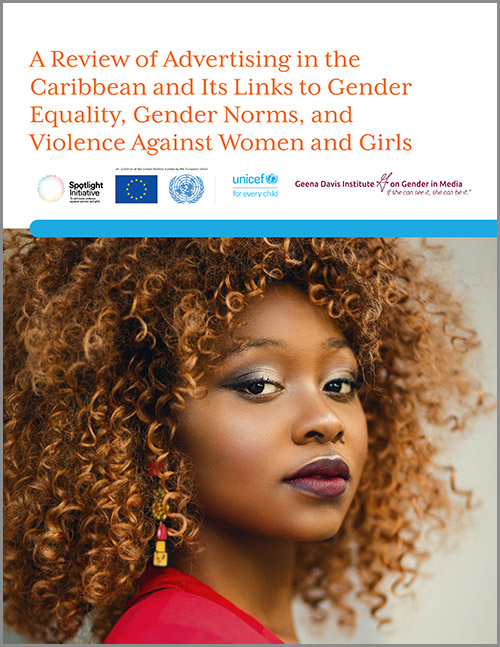
UNICEF partnered with the Geena Davis Institute on Gender in Media to conduct a content analysis of gender representation in 600 advertisements from television and digital media that aired in four countries (Barbados, Jamaica, Saint Lucia, and Trinidad and Tobago). Our key findings reveal:
- Harmful gendered norms and stereotypes are present in advertising in the Caribbean, but inequalities are subtle. However, women and men appeared in advertisements at similar rates overall, though their portrayals varied.
- Women are cast as caregivers but also as objects of sexual desire. For example, women were more likely than men to be depicted with family or as having dependent children (10.6% compared with 7.7%), to be portrayed in domestic spaces (22.9% compared with 17.7%), and to be performing domestic tasks (3.3% compared with 1.8%). Women were portrayed in revealing clothing seven times as often as men (9.1% compared with 1.4%).
- Men were portrayed as powerful providers and leaders. For example, men were more likely than women to be shown having a professional, paid occupation (32.2% compared with 22.5%) and actively at work (26.1% compared with 18.3%).
- Advertisements failed to capture the region’s diversity and widely excluded nondominant groups; characters across advertisements were largely heterosexual, young, thin, nondisabled, and middle class. There was a near-total absence of LGBTQIA+ individuals, people living with disabilities, older adults, and working-class characters.
Recommendations
Based on these findings, we make the following recommendations for agencies, advertisers, policymakers, and international organizations:
- Develop content that promotes positive messages to advance human rights, and that challenges harmful stereotypes and normalized beliefs around violence against women and girls (VAWG).
- Strengthen content-quality testing and evaluation mechanisms.
- Develop partnerships and collaborations with gender-equality organizations.
- Expand opportunities for adolescents to participate in their communities and in the processes that affect them.
- Engage in advocacy with local advertising-standards associations to create or strengthen statutory guidelines.
Photo credit: Pexels

